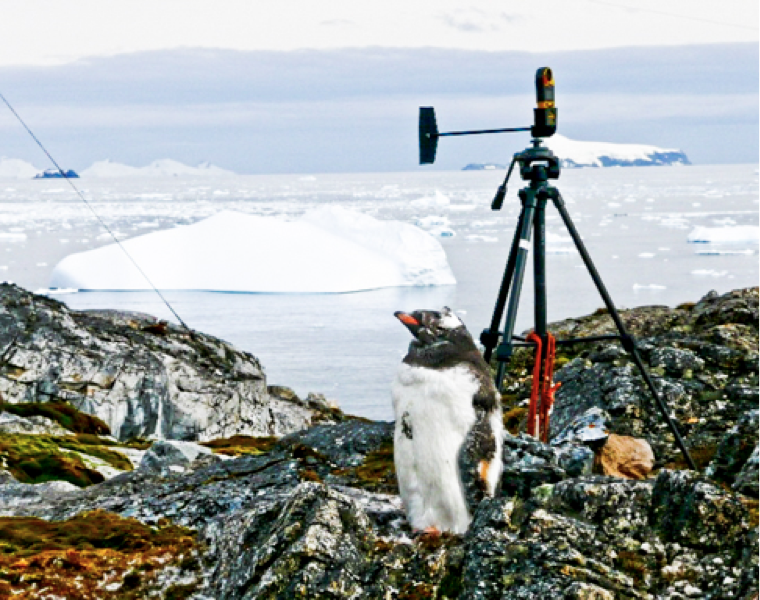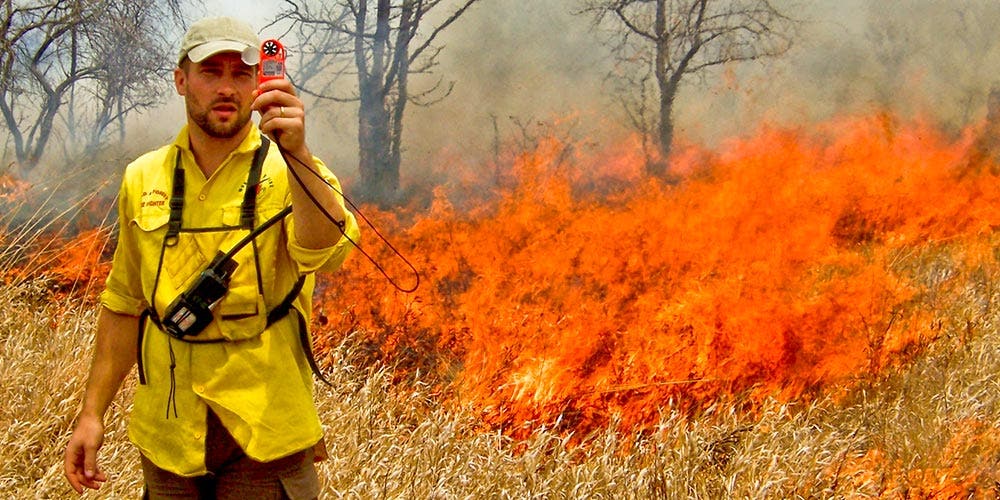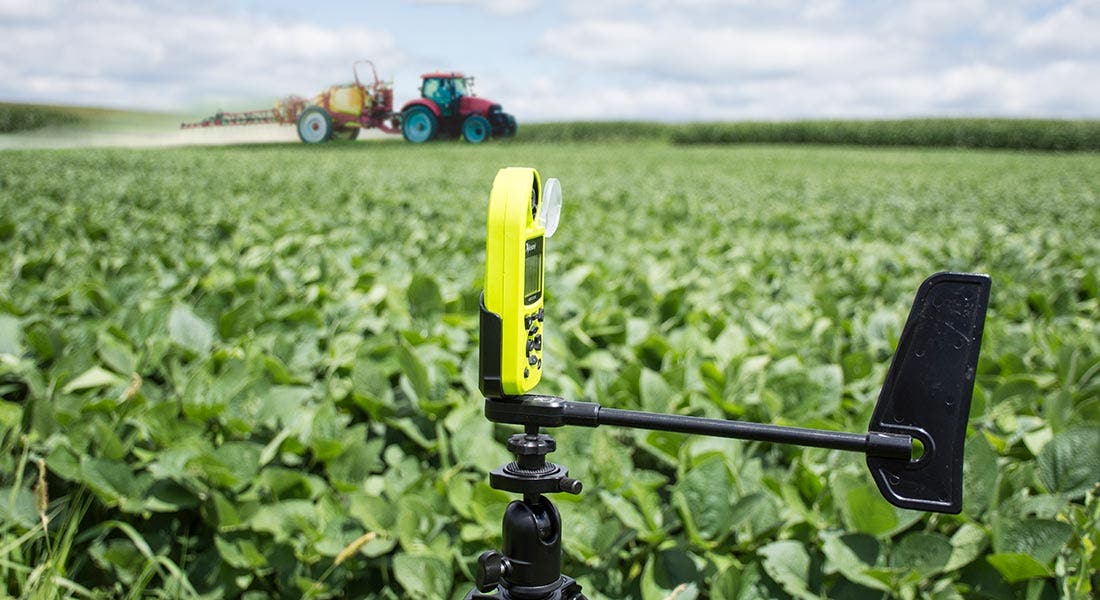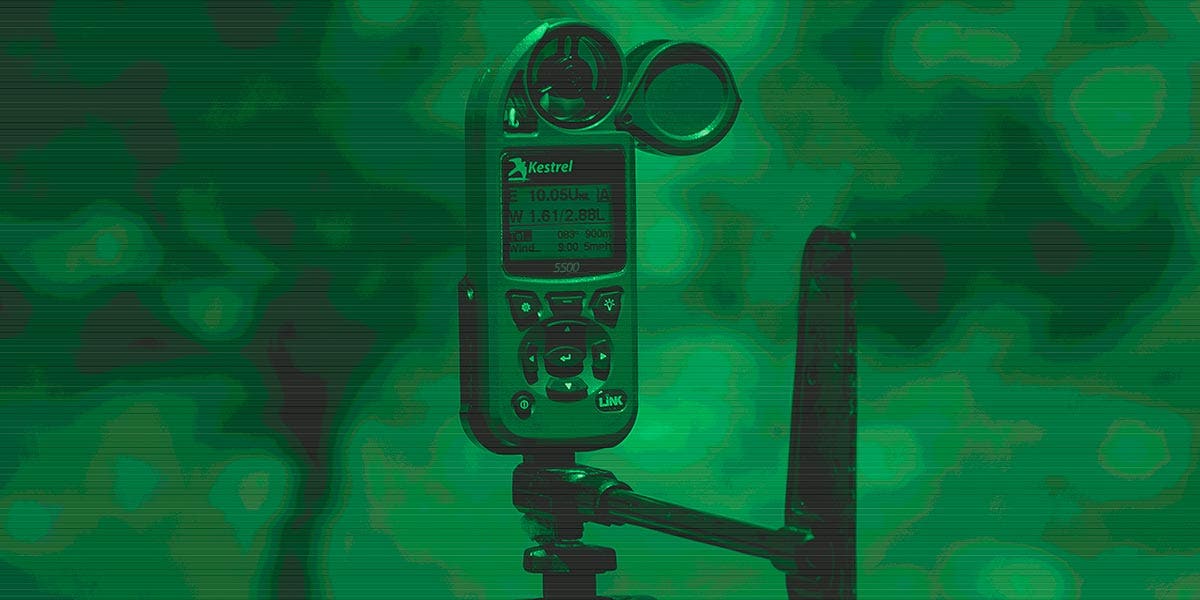The Need for Environmental Monitoring in Scientific Studies
Monica Devlin Comments

Knowing and understanding the environment around us allows us to preserve it, protect it, and even learn from it. Technology makes a major impact on how we apply our understanding to scientific studies, especially with environmental monitoring. With the help of the Kestrel 5500 and DROPs, scientists ranging from ecologists to hydrologists can improve their scientific studies with reliable, accurate data.
Using Kestrel Meters in Antarctic Research
Antarctica’s climate is the harshest in the world. However, this continent, along with the Southern Ocean, are important components of the global physical system. Even NASA keeps tabs on this continent to find meteorites and other rocks that fall from space, since they’re easy to find on the white ice. Coincidentally, Antarctica and Mars have a lot in common---both are cold with frozen desert conditions, valleys, and layers of ice.
How can the Kestrel 5500 help with Antarctic research? Whether your scientific studies are centered around Mars or penguins, this mini weather station can monitor essentially any aspect relating to weather and microclimates, including temperature, wind direction, and wind chill. Over time, this data can contribute to tracking penguin behavior or giving scientists a mock mission to Mars.
Study and Record Volcanic Activity with Kestrel 5500
Scientific studies involving volcanic activity can benefit from the Kestrel 5500. During volcanic activity, there is typically a lot of lightning, thunder, and rain as it erupts. The surrounding environment can also change after a volcanic eruption, which can result in incremental changes in the microclimate.
Scientists are still discovering how volcanic activity changes environments on a global scale. After the cataclysmic 1991 eruption of Mount Pinatubo in the Philippines, about ½ degree temperature drop was noted around the world. Devices such as the Kestrel 5500 can help track these incremental changes to help us understand more about volcanic activity---both before, during and after eruption.
The Kestrel 5500 in Meteorology, Microclimates
As one of the most accurate weather trackers on the market, the Kestrel 5500 provides extremely accurate data for meteorology, especially in microclimates.
Microclimates are limited to a small-scale, restricted area where the climate differs from the surrounding area. You’ll note differences in temperature dew point, wind, and humidity. The microclimate is affected by things such as cloud cover, proximity to water, vegetation, and even the type of soil.
Both Kestrel 5500 and Kestrel DROP weather trackers can aid in scientific studies around the world. Kestrel DROPs are a rugged, waterproof device with a data logger (automatic and manual), data charting, and providing every measurement you need to make your next scientific study a success.
About author
-
 Wildland Fire and Weather Monitoring: Saving Lives with Top Technologies
Combating wildland fires isn’t for the faint of heart. According to the National Interagency Fire Center, over 1,100 people have died from wildfires in the last 100 years. In the last 10 years, 34,607 wildlife fires were reported over 2,932,334 acres
Wildland Fire and Weather Monitoring: Saving Lives with Top Technologies
Combating wildland fires isn’t for the faint of heart. According to the National Interagency Fire Center, over 1,100 people have died from wildfires in the last 100 years. In the last 10 years, 34,607 wildlife fires were reported over 2,932,334 acres -
 How to Remote View Kestrel Data in Four Easy Steps
We are often asked about how to remotely view environmental data from a Kestrel meter. The Kestrel 5000 series, including DROP data loggers, allow users to monitor and chart data including wind chill, dew point, heat stress index, and more. Industrie
How to Remote View Kestrel Data in Four Easy Steps
We are often asked about how to remotely view environmental data from a Kestrel meter. The Kestrel 5000 series, including DROP data loggers, allow users to monitor and chart data including wind chill, dew point, heat stress index, and more. Industrie -
 Getting into the Spirit of Ghost Hunting with Kestrel Weather Meters
From old and abandoned asylums to creepy cemeteries with nothing around for miles, paranormal investigators depend on Kestrel meters for ghost hunting. Searching for spirits with the naked eye is a shot in the dark (quite literally, in most cases), w
Getting into the Spirit of Ghost Hunting with Kestrel Weather Meters
From old and abandoned asylums to creepy cemeteries with nothing around for miles, paranormal investigators depend on Kestrel meters for ghost hunting. Searching for spirits with the naked eye is a shot in the dark (quite literally, in most cases), w -
 Kestrel Meters & Storm Chasing: Reliable Tracking for Severe Weather Conditions
We're heading into the end of hurricane season (November 30), but the impact of hurricanes from this year has left lasting results. Hurricane Michael was the third-most intense Atlantic hurricane to reach landfall in the United States, resulting in $
Kestrel Meters & Storm Chasing: Reliable Tracking for Severe Weather Conditions
We're heading into the end of hurricane season (November 30), but the impact of hurricanes from this year has left lasting results. Hurricane Michael was the third-most intense Atlantic hurricane to reach landfall in the United States, resulting in $
-
 How Does Temperature Monitoring Improve Greenhouse Conditions for Plant Growth?
How Does Temperature Monitoring Improve Greenhouse Conditions for Plant Growth?
-
 Announcing the Kestrel® DROP D1 with Probe: The Ultimate Tool for Precision Temperature Monitoring
Announcing the Kestrel® DROP D1 with Probe: The Ultimate Tool for Precision Temperature Monitoring
-
 Understanding Equilibrium Moisture Content and Why It Matters for Construction
Understanding Equilibrium Moisture Content and Why It Matters for Construction
-
 Kestrel Adds Vapor Pressure Deficit to the Kestrel 5500FW: Advancing Fire Weather Science
Kestrel Adds Vapor Pressure Deficit to the Kestrel 5500FW: Advancing Fire Weather Science
-
 Keeping Canines Cool and Comfortable: How the Pennsylvania Bureau of Dog Law Enforcement Utilizes Kestrel® Meters & DROP Data Loggers
Keeping Canines Cool and Comfortable: How the Pennsylvania Bureau of Dog Law Enforcement Utilizes Kestrel® Meters & DROP Data Loggers




